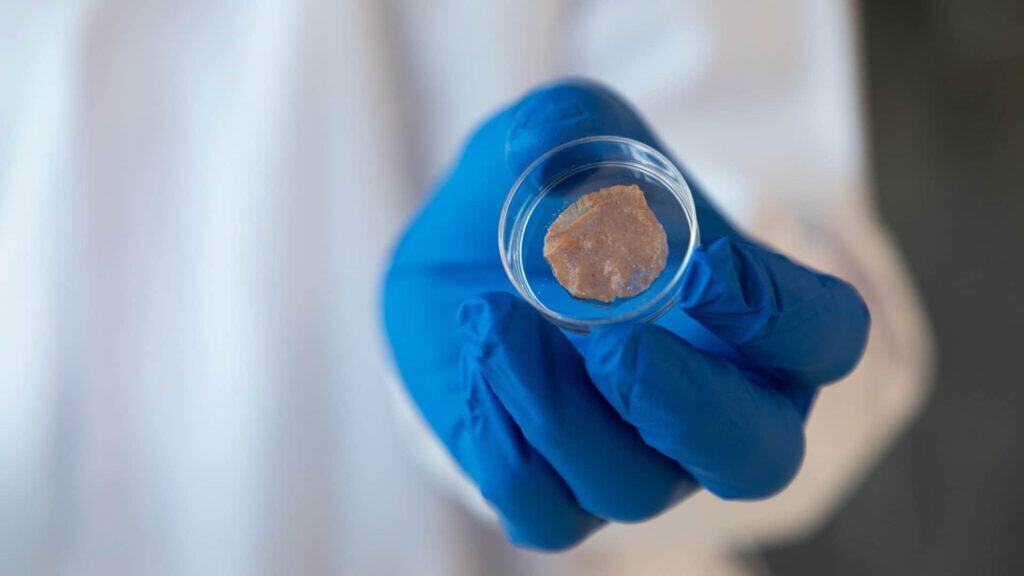A new patent from the DWI – Leibniz Institute for Interactive Materials has been published describing a fibre-spinning method that could transform how cultivated meat is grown and how its texture is formed. The filing outlines a scalable way to produce edible fibres that already contain living cells, allowing structure and tissue to develop in one continuous step.
In an exclusive interview, lead researcher Rahman Omidinia Anarkoli shared how the invention combines cells, edible microcarriers, and a cross-linkable gel that are spun together through a core–shell nozzle. The cells grow inside the hollow fibres, aligning naturally along the length of each strand, much like muscle tissue does in nature. Once cultured, the fibres can be bundled to form structured, marbled pieces of meat.
“We wanted to rethink the engineering around tissue growth,” says Rahman Omidinia Anarkoli, research scientist at DWI Leibniz. “In tissue engineering we already know how to grow cells in 3D — the challenge is scaling it efficiently. Our approach makes the process continuous, practical, and suitable for larger-scale production.”

From scaffolds to self-organising fibres
Unlike conventional top-down methods — which build a scaffold first and later seed it with cells — DWI’s approach is bottom-up. Here, cells are integrated into the structure from the very beginning, allowing them to self-organise and develop within the fibre itself.
“The fibres act like miniature bioreactors,” Omid explains. “Cells have space, protection, and access to nutrients while forming tissue naturally. It’s not just a scaffold — it’s a living growth environment.”
This design could help overcome two persistent hurdles in cultivated meat: production cost and realistic texture. Each fibre functions as both a growth vessel and a structural unit, simplifying handling, increasing yield per volume, and shortening process time.
The idea of edible, cell-supporting scaffolds has been gaining traction across the field. Earlier this year, researchers in Singapore developed plant-protein scaffolds to improve cell attachment and texture formation, while in Germany, The Cultivated B partnered with DenovoMatrix to advance microcarrier-based systems for large-scale cultivated meat production. DWI’s method builds on this momentum, introducing a continuous spinning approach that merges both concepts — scalable microcarrier growth and edible structural design — into a single process.
Collaboration and outlook
DWI is now testing the system with various cell types and compositions while inviting industrial partners to experiment with their own cultures and media formulations. “Collaboration is essential,” Omid notes. “There are great innovations happening in cells, media, and processing, but they often happen in isolation. We want to bridge those efforts and demonstrate how integrated systems like this can accelerate the entire field.”
If successfully scaled, the fibre-spinning platform could open a new path toward affordable, structured cultivated meat — one that unites growth and texture formation in a single process. Its potential, however, reaches beyond food. The same principle could be applied to cell-based ingredients, biomaterials, and regenerative tissues, offering a versatile new tool for the broader biofabrication industry.
Read the full deep dive and interview at Lab Grown Technologies.




